Rolli Days in Genoa, the event that twice a year (in spring and fall) opens for two days to the public the doors of the main historical palaces of Genoa, a UNESCO World Heritage Unesco World Heritage Site (with special events, extraordinary openings of normally inaccessible sites, guided tours with professionally trained young science popularizers), is an event that is finding increasing success, and has reinvented itself after the pandemic by rethinking itself both online and offline, adding another chapter to its history (the first edition was in 2009). What are the secrets of this event’s success? Why is it perceived by everyone (audience and insiders) as a high-quality event? For what reasons can it be a model and a benchmark for the enhancement of cultural work? Can it be a replicable experience elsewhere? We talked about all these issues with Giacomo Montanari, art historian and, since 2017, scientific curator of Rolli Days. The interview is edited by Federico Giannini, editor in chief of Finestre sull’Arte.
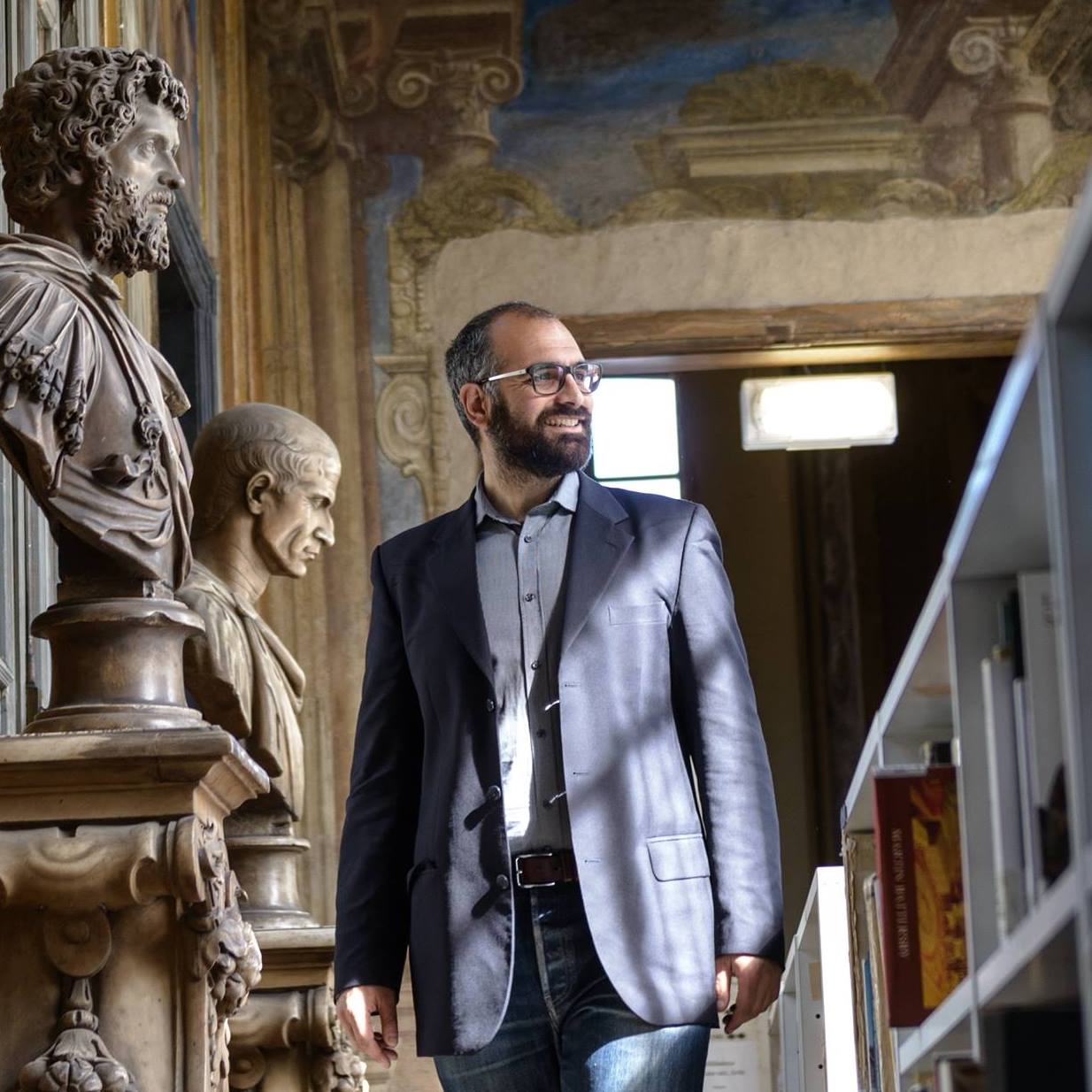 |
| Giacomo Montanari |
FG. Despite the difficulties due to the pandemic, the spring 2021 edition of Rolli Days was duly held both in presence and digitally and was also well attended, despite the fact that the museums had opened a few days earlier. What is the balance sheet?
GM. The May edition went very well. The figure that I find most interesting is that in this problematic edition (because of all the anti-Covid regulations, the fact that we were back in presence after there had been a more than six-month-long closure and with the museums having reopened the weekend before, so somehow it was all experimentation) we safely managed to bring more than 20.000 people, and this is a striking demonstration of how, by carefully planning an event, it is possible to succeed even in an emergency or otherwise still potentially problematic situation. Perhaps, thinking about the overall situation, it would have been appropriate to design rather than aseptically close cultural sites: we, for example, complied with very strict rules and regulations, moreover, thoughtfully integrating the provisions of each open site, public and private, into a general protocol, taking into account the individual instances of each place. It was very complicated work, but it paid off very well: people, in fact, knew what they had to do; they showed up according to the rules, at the established times; they entered in the predetermined numbers, eliminating any management problems, which occurred instead in the more “free” editions of the past. This managerial agility was not only noted, however, by the organizers: I must say that most users reiterated these considerations, noting maximum ease of access to reservations and to the sites themselves. The clearer the rule is, the more people are inclined to abide by it. If, on the other hand, the rule is confusing, contradictory, not unambiguous, then misunderstandings can be created that are potentially very problematic to manage. The second key data point is that of the audience, that is, who came to these Rolli Days. Until 2019 we had a user base mostly placed in the 45-65 age group: usually people who have a certain culture or even a certain habit of using their free time to participate in these kinds of cultural events, and consequently they are the main users. In this edition we had 52 percent of users under 35, and this in my opinion is a figure that borders on the incredible. A result that I do not hesitate to call resounding, and one that (I think) goes to obscure any other data I can give at the moment, because it means that of these 20,000 admissions, more than 10,000 were admissions from people under 35, a group traditionally considered more distant from culturally oriented events. I seriously wondered why these numbers on young people, and the answer I gave myself concerns the other side of the event: we have been working a lot on quality digital promotion for the past year and a half. Perhaps a mode of promotion closer to the 18-35 age group than to the 45-65 age group (who perhaps find information more through traditional channels) contributed to the success among young people: probably the younger people, finding the Palazzi dei Rolli narrated with young (and trained) science popularizers through YouTube channels, on social networks, always keeping the bar high on the quality of the content, with excellent images and through videos built to be narrative and in any case based on scientific evidence, thought of going to see live precisely those palaces during that weekend. I think there is a correlation between these elements, that is, on the use of digital systems as a “megaphone” of the cultural event and at the same time on maintaining, in the digital content, that very high quality part that makes Rolli Days an event capable of deeply satisfying very different audiences. By this I do not mean that it is a “perfect” event. Like all proposals, it is profoundly improvable, with many criticalities, including on what is said by science popularizers, because it is an event that carries with it a strong educational value. For each edition of Rolli Days, in fact, we do ad hoc training, related to job placement for young professionals, and this means many times experimenting with solutions and sometimes having to correct the shot. We work, as everyone does, to be able to put ourselves in a better position the next time.
I’m speaking on the topic of digital because there is more and more talk about it: what indications have you taken from the work you have done on digital and how do you intend to use them to continue working on the integration of online and offline in the future (and of course how did you do it for this edition)?
The indications are of two kinds: the first is the quantitative one (the easiest to register) that indicates that digital products reach an amount of people that is impossible to engage live on individual events: if I have a million views of digital products, I cannot expect to bring a million people to Genoa in a weekend. I think this is quite obvious. So, in fact, the audience expands: digital has a very wide audience, and this is an advantage that should be kept in mind. The second fact is about the necessary design of different products, adapted to the different channels activated. Going to work on the different profiles of social channels, such as Instagram, Facebook, YouTube, implies a more studied diversification of content. What has emerged from our data is that some products work better in some circumstances on some channels-a perhaps obvious consideration, I can already hear the voices of readers murmuring “you could have thought of this before”... for the initiatives related to the Palazzi dei Rolli, however, these are many “firsts,” and so even these basic data, for the future, are still important experiments. What we want to do for the future is to optimize this effort, perhaps even rarefy the quantity and increase the quality, including the perceived quality in relation to the channel on which we are going to speak. I believe, in fact, that it is first and foremost a matter of languages: I can say something beautiful, but if I adopt a language that is not understood and if at the moment I say it it is alien to my audience, it is almost useless for me to communicate it. It’s clear that on social you have to speak with a different language, with a tone of voice that is measured in the context in which I’m going to interject, and this is a process that we want to explore even more in the future. What will never be waived will be the aspect of the origin of content, that is, scientific research, which then becomes language that can be declined under different profiles and with different facets, taking into account different audiences. Certainly the realization of digital content, as to the coexistence of the two modes, will not remain alien to the live event: that is, we would like to experience the technology on site as well. So, for example, with experiences of augmented reality or reconstruction through technological installations of environments that have perhaps been lost in time. And this is because these narratives, in some places, make it possible to make leaps in quality, to manifest the passage of time in situations of territory or heritage that have undergone actually very significant changes and that in front of the public is impossible to reconstruct in any other way than through the help of technologies. This is also something that we want to try to put into the field, working on it, however, with all the necessary caution.
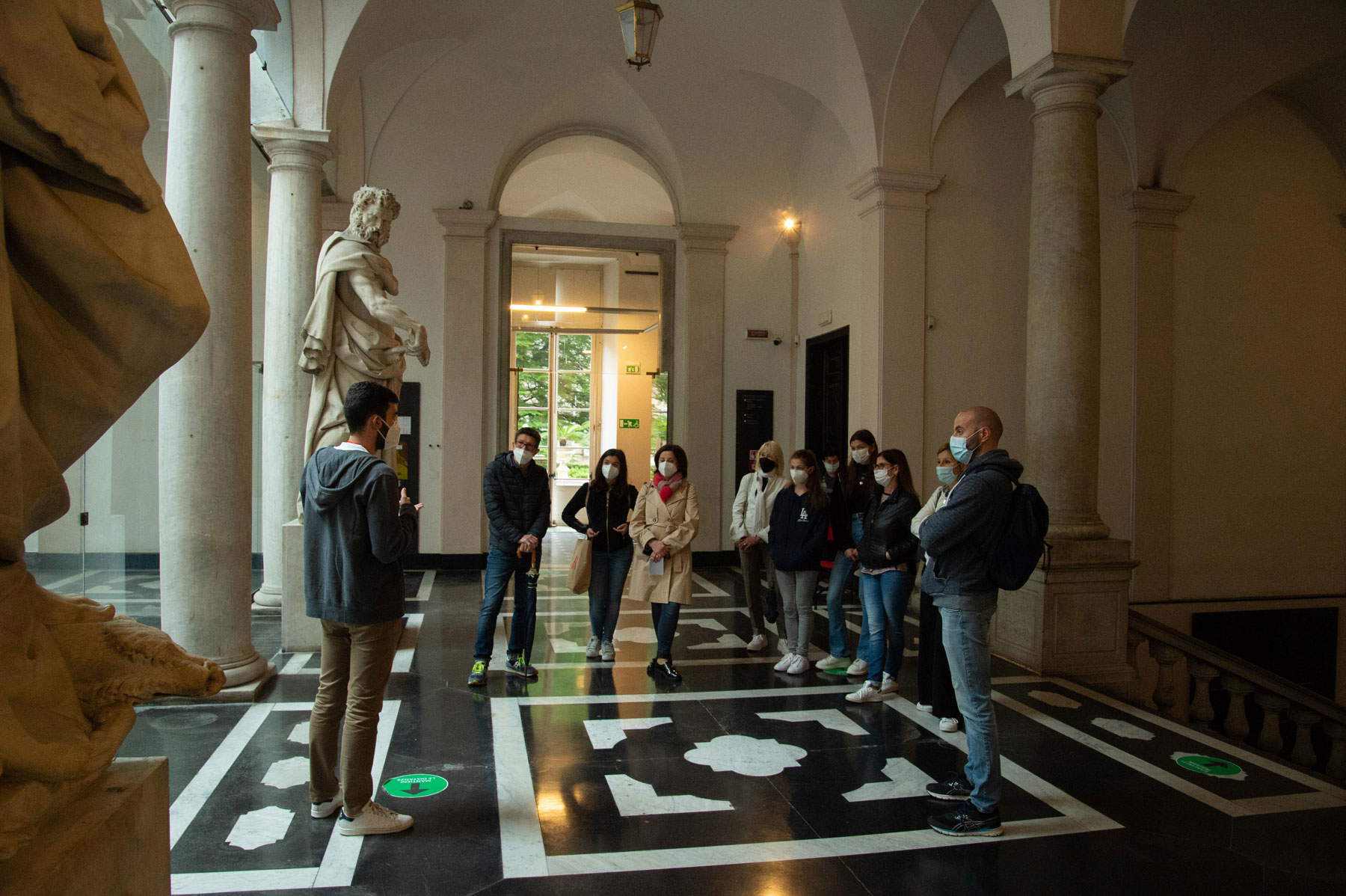 |
| Audience at the spring 2021 edition of Rolli Days (Palazzo Bianco). © Stefano Bucciero |
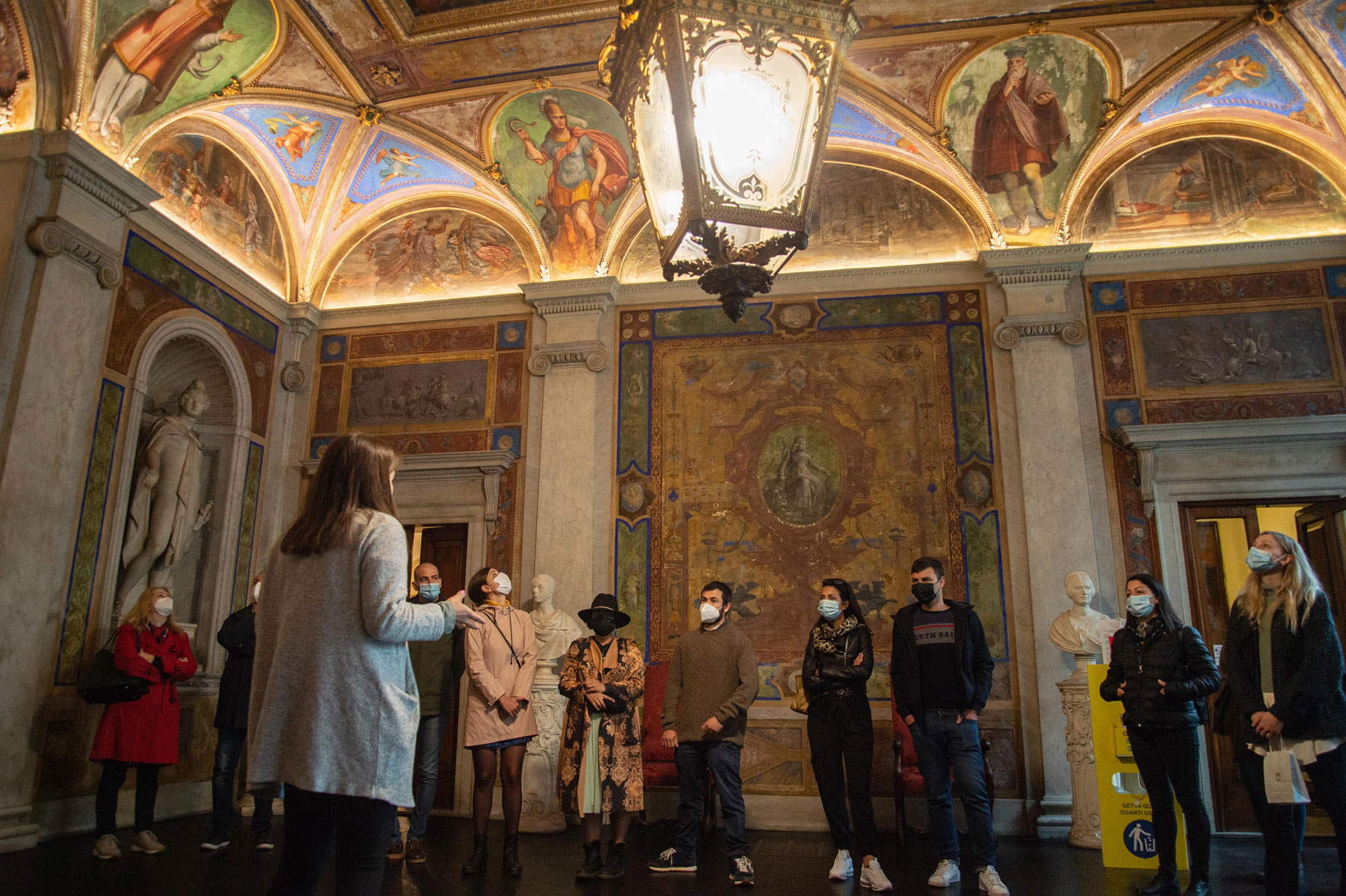 |
| Audience at the spring 2021 edition of Rolli Days (Interiano Pallavicino Palace). © Stefano Bucciero |
We have touched on one of the elements that underlie the success of the Rolli Days, namely the scientific quality of dissemination and storytelling, which I would like to return to in a moment: first, I would like to elaborate precisely on the theme of the success of the event, because it is clear that there are several elements that have ensured the success of the event (with even peaks of one hundred thousand participants) in previous years at Covid, and that have ensured it this year as well. What are these elements?
There are several factors that also contribute to an effective formula. One of them is the close relationship of collaboration between the entities: in Genoa, the City Council proposes a Unesco heritage event that descends directly from what the management plan for the site provides, talks with the University, talks with the Palazzo Ducale Foundation, talks with the Superintendence, and somehow systematizes the resources that make it possible to have a truly complete event, in which we really participate in promoting heritage in the true sense of the term. “Promote” not in the sense of putting together a saleable resource, but promote in the sense of making citizens (not just Genoese) understand the value that these objects and that this heritage has for their lives, for the city and for the area. This is a participation that is not solo, but is choral. This is a fundamental starting point: too often we think in terms of someone’s solitary race to promote themselves. I believe that today Italy needs to make a large and compact common front, within which the bodies involved in culture propose benchmarks, that is, mark the levels on which we must think. After that we compare and propose what is the standard of quality on which we need to work. Otherwise you run the risk of having a lot of free beaters acting completely unrelated to each other, and this can create a number of problems , particularly related to public perception. It is important that precisely in a cultural event, or even cultural tourism (if you will), which is a term we need to stop being afraid of, the participation of the University is an important card, played with the understanding that in order to tell the story of heritage one must first know it. Knowledge is the basic shared value by which a story can be told. Today there is a lot of talk about storytelling, but narratives have content at their foundation, if the content is not there then the narrative I make can only be empty. An empty narrative is bound to fail, leading to a loss of trust from the audience and those I wished to engage. The second point that follows directly from this actually is the involvement of young people. The result of 52 percent of under-35s coming to see these assets in attendance, in my opinion, also stems from the fact that culture here is proposed by young people for young people. And the young science popularizers are not volunteers, they are not people who are members of associations or the like, but they are the young people who are studying or have studied humanities subjects (cultural heritage, architecture, languages, tourism sciences and so on), who are trained, who have passed a selection to play this role, after which with this training they “tell” the heritage to the public. This in my opinion (notwithstanding the fact that not everyone is equally good and that by making mistakes) allows the entrance to the Palazzi dei Rolli to be experienced in a way that should be acquired as necessary in all cultural sites in Italy. That is, the need for a complex heritage, such as Italy’s, to be narrated by professionals who follow constantly evolving educational paths and who are the best product of our universities, where the humanities are too often seen as “handmaidens” of other disciplines. We have a system of museums and monumental heritage in Italy that is one of the most extensive in the world, certainly one of the most widely spread throughout the territory, and we have one of the most closed and antiquated systems of co-opting competent and professionalized personnel on the globe. Young people, even in the most basic roles, such as heritage science outreach, can hardly get in. And so I wonder if the involvement of young people in heritage storytelling can be the resource that can transform an often wonderful and unique heritage, but very often also abandoned and little perceived by the citizens themselves as a resource, into a protagonist of the knowledge of the Italian territory. I think not only that it is possible, but that it is the road to beat. However, institutions must understand that this virtuous path, which starts from research, reaches teaching and ends in dissemination, must be constituted as a system and not as an episodic reality. Because (let’s face it) it cannot be the four days a year of Rolli Days that guarantee stability for these young professionals. This is a field choice that must be made precisely at the ministerial level and must embrace the whole country.
The scientific popularizer of the Rolli Days is, also in my opinion, another factor in the success of the event, since those who visit the palaces are assured of meeting young professionals who can tell their stories with great expertise, and of not running into volunteers. What is the typical profile of these young workers?
In the meantime, I will premise that, with some regret, it was also necessary to put an age ceiling on the role of Science Disclosureist, because, while I regret to cut out blameless and good professionals, I think this role best suits someone who is in an early stage career, that is, an early moment in their professional training. This is a starting point. Then as a profile it certainly needs to be linked to a university pathway. In terms of disciplines, we never wanted to be stringent precisely because I think a complex monumental site like the Rolli has the possibility of being told from different perspectives. Just as the architect and the art historian can enrich the way of storytelling through their expertise, so those who have studied foreign languages and literatures are often a valuable resource because they are able to open up the dialogue with foreign tourism, a user base that (before these unfortunate years) was one of the growth factors, and so on. However, that of the science popularizer is a profile that has to do with the approach to the humanities. This means that the science popularizer is not always a specialist in art history, also because telling about these palaces (and this descends directly from the motivation that Unesco gave for the protection as a World Heritage property of this Site) does not only mean telling about the works of art. Unesco identifies these sites as a physical presence of Genoese society between the sixteenth and seventeenth centuries, a society that was able to determine in Europe a new season for the development of finance that was able to reflect in new forms of urban construction, collecting, and cultural production. So does privileging the merely artistic aspect make sense? I think not: the most interesting things about the system of the Rolli, as an art historian, I learned from economic historians, who were able to identify the economic-financial conditions that made the extraordinary artistic commissions possible at that given time and not at others; just as fellow architects are able to recount the exceptionalities noted by Rubens in these palaces, so much so that they became a housing model for the European aristocracy. I think we are really talking about the humanities, that is, those disciplines that allow, as an applied methodology, to be able to read properly the layered complexity of these places. We are working in these days on the new call for applications to broaden this short list of suitable candidates from which we then derive the disseminators called for the different events, but the figure on the profile will remain the same: so we are open to all the so-called humanities, a field in my opinion that even in Italian universities continues to form world excellence.
There is another aspect on which I would like to speak and on which Rolli Days in my opinion is a perfect example, which is the ability to frame the discourse on popularization in an area in which the university has a prominent role. In my opinion in Italy we have had, and to some extent still have, a big problem, which is the fact that the academy has always shown some reluctance towards popularization, and this thing in my opinion has done and continues to do really great damage. What are the limits that, in this area, we should overcome?
First, I have hope that this critical issue (i.e., the academy pulling back in the face of disclosure) is being resolved. The University of Genoa, for example, has a Pro-rector for the third mission (i.e., dissemination, science popularization), Fabrizio Benente, who is an archaeologist, and this makes me very happy: first, because there is a humanist who deals with these things, and then because there is a governance that wanted to choose a specific delegate in this area. I don’t know what the situation is like in other Italian universities, but I think that having someone whose mission is to work on this issue is the right way to go. Anyway, in my opinion actually the obstacles today are still many. One of the most frequent problems is related to the perception of science dissemination: ostracized from the official spheres of the institutions that do research and teaching, this risks ending up in the hands of often unqualified people who contribute to digging a deep furrow between research and the sharing of research itself. It means that too often we see, even in official venues, the presence of people who have no qualifications to deal with topics they are talking about and who are then actually not only kept in mind but also called upon to be references by a number of respected stakeholders, including those who organize exhibitions, cultural foundations and so on. This seems to show that science outreach is an endeavor in which any ordinary enthusiast can become an opinion leader. Of course, anyone can do what he or she believes, and if he or she is successful so much the better for him or her. The real problem is that when those who “wash their hands of it” and keep their distance from these systems are the entities in charge, in a world that is increasingly globalized from an information standpoint and where the Internet has made information massively accessible to anyone without any filter, people who do not have training or a critical system to understand when an intervention is good or instead is poorly done or even distorted, are unable to distinguish. I believe, then, that the time has come for cultural agencies to take responsibility, seriously and with awareness. The first responsibility to take is to provide ways for people to form their own critical view of heritage. And then to build through dissemination not an official version (otherwise it seems like putting a stamp on culture, which no one intends to do), but qualitatively high quality products in which the narrative of heritage and the scientific research being done on heritage emerge from a clear, serious, complete and transparent path. Then everyone will always be free to say what they like, but at least there will exist, on the part of the entities that have made this their mission and are also charged with this by the State (because the University and the Museums, for example, have a very specific mandate), a narrative, a story, a confrontation with the public certified by what is scientific methodology. Let us not forget that when we talk about science, we are not just talking about hard sciences, mathematics or the like, but everything that is approached with a scientific methodology by the various disciplines, including the humanities. Art history, for example, has a scientific method: it is not an exact science, it is not mathematizable, but it has a method of research that cannot be disregarded, and when it is disregarded it creates enormous problems because it seems to be dealing with a totally arbitrary discipline. The humanities have scientific methods, and if you don’t use them you do damage, even serious damage, to the public’s knowledge and understanding relative to the cultural sector. I believe that, in light of these considerations, today the great gap that needs to be filled is that of the assumption of responsibility, by those who deal professionally with disciplines (of all kinds, and particularly the humanities), to tell clearly, and by finding the most appropriate languages to reach the public, what is their research work, and that one embarks on this path with the humility not of wanting to correct or rebuke, but with a willingness to offer direct confrontation with people, constructive dialogue, and to provide tools rather than solutions to the public one encounters. I believe this is the strong goal today: a scientific popularization devoted to becoming a “toolbox” to make citizens the first connoisseurs, guardians and storytellers of our cultural heritage.
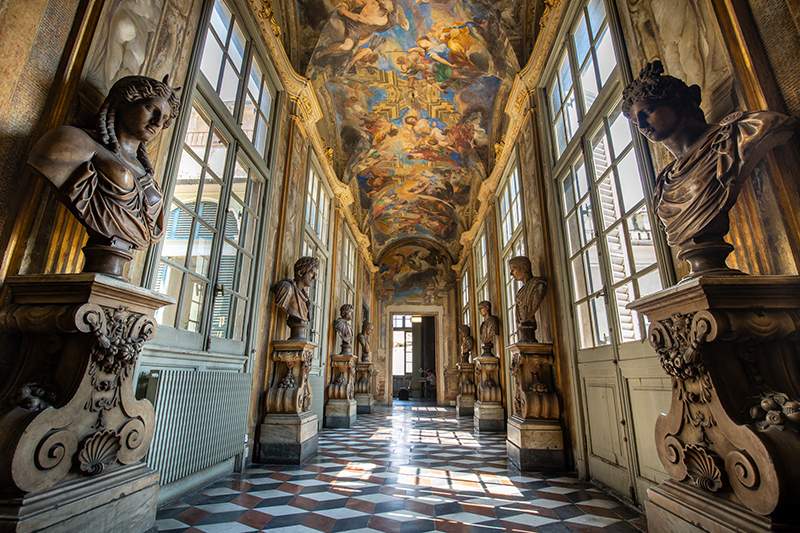 |
| Balbi Senarega Palace. Photo by Laura Guida |
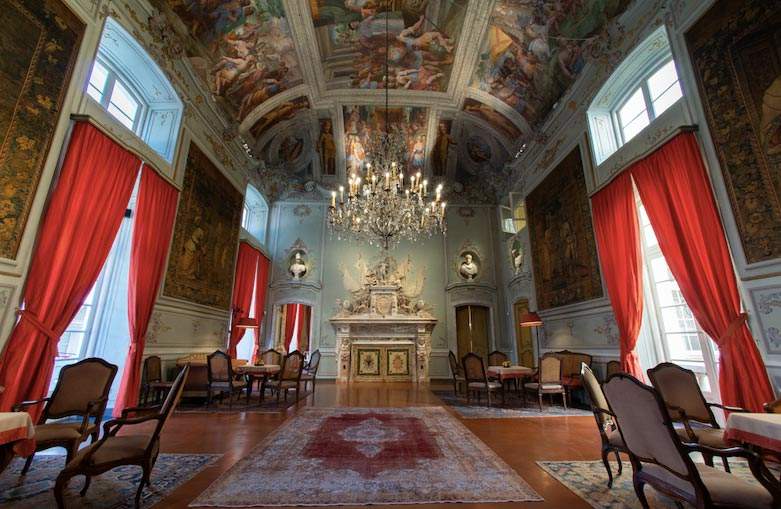 |
| Giovanni Battista Spinola Palace |
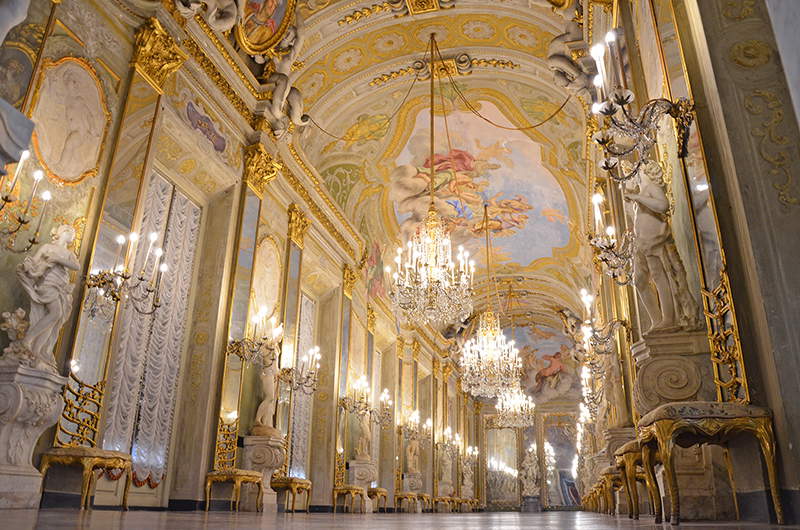 |
| Museum of the Royal Palace, Gallery of Mirrors. Photo Municipality of Genoa |
Speaking of the theme of work that we touched on, we are in a historical moment in which work in culture is not exactly being treated so well (and this is not a feeling, but it is the data that certify it), and we have also seen how during the pandemic year the indicators on cultural work have, moreover, worsened. Rolli Days is ho an event that aims to recognize the importance of cultural work. And in a country where it seems that the recognition of cultural work is still struggling a bit to take off (and we see this also from so many recent and very recent episodes, even from the last few days), what can the Rolli Days say to culture?
Then, in the meantime, we need to be realistic: with the work of four or eight days a year, problems are not solved, but, if anything, signals are being sent out about a way of working that offers respect to culture-related professionalism. Signals that are being given by entities such as the City of Genoa and the University, which have chosen a very clear line, and that is that volunteering, as much as it is a very dignified activity, cannot replace specific professionalism. In no field. I believe that Rolli Days can be a virtuous example: in the event, for example, there has always been room for licensed tour guides and science popularizers (which are not the same thing, nor should they be, precisely because there is room for all qualified professionals in the cultural field): the problem is to begin to act with rules that will help us to coexist in a more correct way, because if on the one hand, obviously, the Rolli make a contribution, pay and remunerate these young people, it is clear that these young people cannot rely on episodic collaboration with the Rolli Days to make this their job. On the other hand, the very significant presence of these young people has been one of the keys to success, and so I wonder how it is possible that so many who fill their mouths and often their pockets with the concept of enhancing, giving back, restoring and repurposing cultural heritage to citizens do not realize that having real professionals paid, respected and put under contract is added value that can take off both their perspective toward promotion and what we can vulgarly call exploitation of what can be derived from the goodness of these events. It always leaves a bitter taste in my mouth to see public institutions trying to save money on personnel. The qualified people working in promotion are the ones who ensure the comprehensibility of the heritage and the perception of the value (enhancement) of it. The involvement of young science popularizers at Rolli Days can be an example, a good practice, a best practice, that can be taken as a reference as a scalable model to select, train, pay young professionals in the humanities. Clearly, it is not a solution, it does not solve the problem of an increasingly struggling field, but I certainly believe, as Pasolini used to say, that they are fireflies shining in the dark and that they prove in some way that it is possible to think in these terms, and that if it is possible for an episodic event, it can be all the more possible for a nationwide system that is based on proper remuneration and the pooling of professionalism to talk about heritage to the public. I don’t think, I don’t think and I don’t want Rolli Days to be a solution, however, there has certainly been a completely conscious choice here (and not because volunteering is not considered valid, but because the involvement of young professionals is considered more valid) to go in this direction. A virtuous direction, which should also be taken by those who not only four days a year, but every day, open monumental sites to the public. Sites from which they also derive substantial income (which is not the case for the days of the Rolli, it should be said for the avoidance of misunderstanding) that should be redistributed in order to be able to offer the public the highest possible quality in the encounter with heritage, offering young people who are training in the universities and training facilities of Italy the opportunity to really be that hinge, those facilitators, those cultural mediators towards the public that are too often lacking. Too often museums are unreadable places or the heritage itself is something incomprehensible to the public because it does not have the structures, the ways, the system to speak an accessible language.
To get down from the general to the particular, a question that could ask for an interview of its own, however we can frame the question in broad strokes: how do Rolli Days fit into the context of culture in Genoa and how is the situation of culture in the city?
This is really a very broad question, also because in my opinion culture is not only what is proposed by the public body, but it is the awareness that the citizen has the opportunity to form of its context and therefore it is a measurable magnitude up to a certain point. I can say, and I’m glad to say it, that citizen awareness is high, because the response to reopenings and involvement even when only virtual performances could be done has always been remarkable and conscious. Of course, I always regret that we are reminded of the irrenounceability of culture only when it suffers and that we have to come to suffering to understand the real value of things (we may consider this a cliché but I think it is, alas, very true). There are systemic problems, as there are in most Italian cities, because the positive relationship that is woven around Rolli Days I would like to see happen in the day-to-day management of the city’s cultural offerings as well, and instead it is often difficult for institutions to get on a systemic basis. What is certain is that for the great process of restoration of most of the city’s most important museum sites (above all Palazzo Rosso and the Sant’Agostino Museum) in the last two years, all things considered, the time of forced closures has been well used because these two sites (which are two flagships of the city’s offerings) will most likely be able to return to welcome the public in 2022, in a guise that is finally adequate to their role at the structural level. Right now, however, they are closed, and there is a work in progress (not knowing firsthand the specifics of the projects I cannot spend too many words) but the hope is that we can get to make a proposal that is really hinged on the territory. Culture is undoubtedly a positive social activator for the territories, and so if a lot of work has been done on the city center, so on the Palazzi dei Rolli, Via Garibaldi and surroundings, we need to be able at this point to go and insist on those more problematic areas (such as Sampierdarena, Cornigliano, the Polcevera Valley) that through cultural sites can put in place virtuous processes. For the center it was like this: if you had gone and asked ten years ago “what are the Palazzi dei Rolli?” to people who lived in them, the vast majority of the inhabitants would not have been able to answer you. Today, anyone who promotes an event or proposes an activity where in the slightest one of the palaces of the Rolli system is involved, puts the word “Rolli” prominently on display and it always appears. This is because the Unesco site has itself become a positive activator, and this is a sign that it has, all in all, worked well and that a positive awareness has been developed in the citizenry. Citizens, for example, are now the first to be outraged when vandalism occurs involving historic buildings (even those not protected by Unesco), perhaps in the historic center where the problems are still great and have been exacerbated by these pandemic-related closures. These are all positive factors: when there is a critical mass that pushes, even politics makes certain decisions, and that means that the awareness of who is the real owner of the assets, that is the citizens, is very high. Right now I think this is the most positive fact. I have a hard time saying what the future of the city will look like because I think we are in for years of great change. But surely the fact that the events related to the Palazzi dei Rolli have become, even on the agenda of city politics, the central event for promoting the territory on the one hand makes me naturally happy for the work done with the University in synergy with the entities in the area; on theother it makes me realize that the value that this Unesco heritage spread over the territory has been fully understood, and that precisely this difficult feature of it (opening private and public buildings together is really a big problem of management and organization) has been appreciated as an important element. The territory in my opinion is always something to look at with more and more respect, a respect even more pronounced than that paid to the single monumental object. If you abstract the monument from the territory, you “kill” it, you render it mute. And this happens whether we are talking about a palace, whether we are considering a cultural center, or whether we are talking about a church. But if these elements are, instead, seen as parts of a system, then the territory can really be subtended by maintained, restored, beautiful, livable pathways around which commercial activities flourish. Something that can be a positive activator. The secret of the Palazzi dei Rolli is precisely this, that it is not a palace but a system of streets around which these palaces were built in the 16th and 17th centuries and which still give a perspective of reading the city more than a single element of cultural value.
Speaking of the future, one last question. I imagine you will already be at work next edition: can we have some anticipation?
We will be talking for the first time about having in attendance a week of events related to the Palazzi dei Rolli, and this is also because there have been important contacts with private event organizers: Shipping Week, which is one of the most important European events in the maritime sector, will collaborate with Rolli Days to create an edition in October that has the theme of the sea at its center. This will mean being able to go and extend the duration of the event for this week, instead of the usual weekend, and thinking in terms of partnerships, where the partnership is made directly between the event and another entity. This is an important factor that helps to recognize the exceptional nature of the event related to the Palazzi dei Rolli. In addition, an event linked to a specific sector, as Shipping Week has always been, is opened to the whole city because entry to the palaces will always be open to everyone anyway, not just participants. This is one of the values that have always guided the work on the heritage of the Strade Nuove and the Sistema dei Palazzi dei Rolli: to act in order to achieve true “restitution.” The Unesco heritage must be a resource for everyone, and that is precisely why we can never derogate on the qualitative aspect in its promotion, because it is part of the very essence of the city. These palaces are a fundamental part of Genoa’s history and can also be in the future one of the pillars on which to recognize its importance as a European matrix towards international research, the establishment of high-level educational paths, the dissemination to the public of cultural tourism and private individuals who want to work with excellence from the point of view of cultural and scientific promotion.
Warning: the translation into English of the original Italian article was created using automatic tools. We undertake to review all articles, but we do not guarantee the total absence of inaccuracies in the translation due to the program. You can find the original by clicking on the ITA button. If you find any mistake,please contact us.